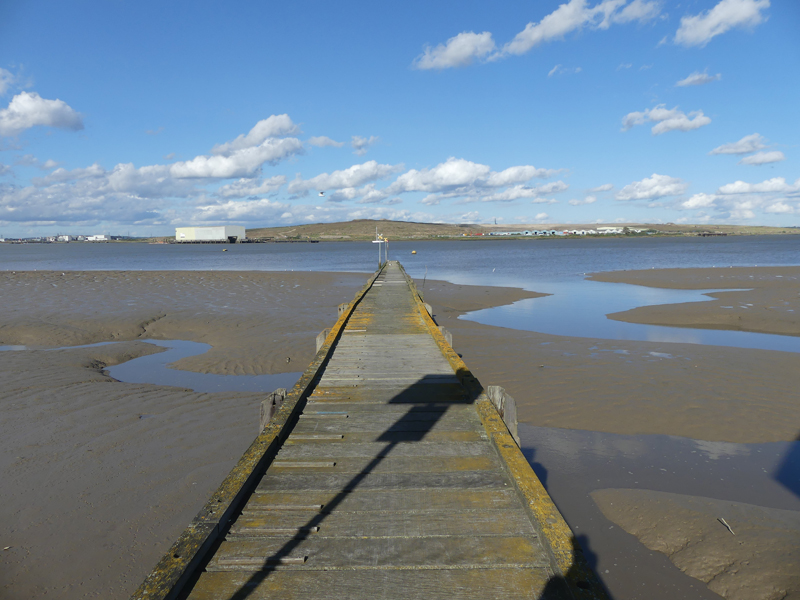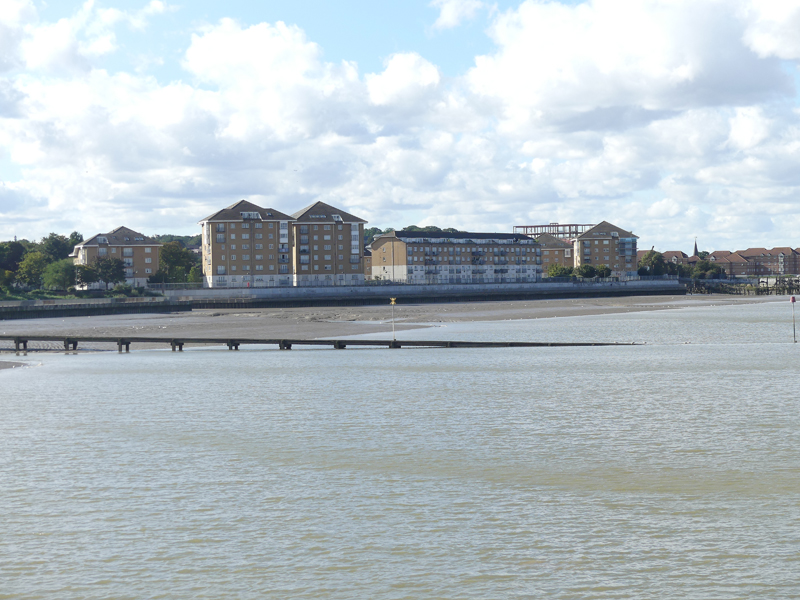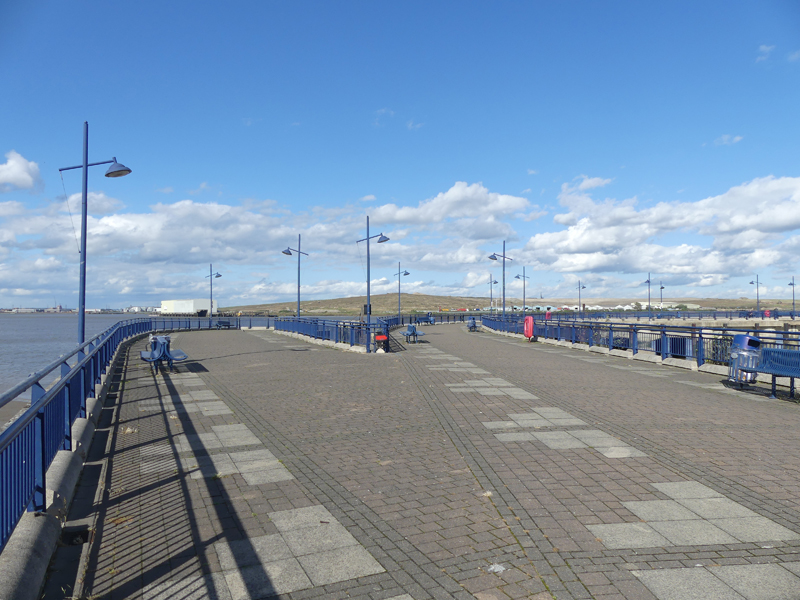Erith Pier & Riverside

Erith Pier and riverside is an access point to the River Thames in southeast London. This small pier and riverside walkway is set in an urban environment to the rear of a supermarket, surrounded by apartments with areas of industry visible on both banks of the river. At low tide areas of mud are exposed which can attract small numbers of wading birds and wildfowl at the right time of the year but large numbers of gulls are always in the general area, attracted by the landfill area at Rainham on the northern bank of the Thames. The largest number and variety of birds is seasonal but the pier and walkway give public access to the area at all times and with a large car park on site this is a convenient place to do some urban birding and to try to find a scarce species of gull.
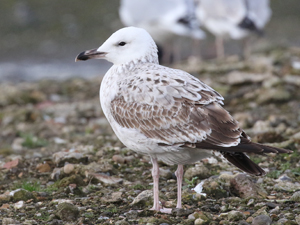
While a variety of commoner wading birds and wildfowl have been seen here over the course of time, and even a few seabirds such as Guillemot have occurred, the real reason to visit Erith pier is to watch gulls.
Although gulls might not be every birder’s favourite set of birds this is an excellent place to get close to a wide variety of species and to become more familiar with different plumages; a good place to learn more about these difficult birds. This site is also a great place to appreciate how rich in birdlife an urban site can be, albeit almost exclusively consisting of gulls.

To many birders the main reason to visit Erith pier would be for a very good chance to see both Yellow-legged Gull and Caspian Gull both of which are fairly reliable between late summer, through autumn and winter; challenge yourself to try and identify them!
Of course anywhere that gulls congregate can always attract rarer species, particularly during winter when Iceland Gull and Glaucous Gull have been seen. Terns can make it this far up the river during migration with small numbers of Common Terns apparently nexting somewhere not too far away as they occur throughout summer here.
For those who are not from the region Ring-necked Parakeets might provide an interesting distraction although the prospect for other arboreal birds is very limited.
- Greylag Goose – Anser anser
- Canada Goose – Branta canadensis
- Mute Swan – Cygnus olor
- Egyptian Goose – Alopochen aegyptiaca
- Common Shelduck – Tadorna tadorna
- Gadwall – Mareca strepera
- Mallard – Anas platyrhynchos
- Eurasian Teal – Anas crecca
- Great Crested Grebe – Podiceps cristatus
- Rock Dove – Columba livia
- Common Woodpigeon – Columba palumbus
- Collared Dove – Streptopelia decaocto
- Common Swift – Apus apus
- Common Moorhen – Gallinula chloropus
- Eurasian Coot – Fulica atra
- Pied Avocet – Recurvirostra avocetta
- Eurasian Oystercatcher – Haematopus ostralegus
- Northern Lapwing – Vanellus vanellus
- Common Ringed Plover – Charadrius hiaticula
- Eurasian Curlew – Numenius arquata
- Black-tailed Godwit – Limosa limosa
- Ruddy Turnstone – Arenaria interpres
- Dunlin – Calidris alpina
- Common Sandpiper – Actitis hypoleucos
- Common Redshank – Tringa totanus
- Common Guillemot – Uria aalge
- Bonaparte’s Gull – Chroicocephalus philadelphia
- Black-headed Gull – Chroicocephalus ridibundus
- Mediterranean Gull – Ichthyaetus melanocephalus
- Common Gull – Larus canus
- Herring Gull – Larus argentatus
- Yellow-legged Gull – Larus michahellis
- Caspian Gull – Larus cachinnans
- Iceland Gull – Larus glaucoides
- Lesser Black-backed Gull – Larus fuscus
- Glaucous Gull – Larus hyperboreus
- Great Black-backed Gull – Larus marinus
- Roseate Tern – Sterna dougallii
- Common Tern – Sterna hirundo
- Arctic Tern – Sterna paradisaea
- Sandwich Tern – Thalasseus sandvicensis
- Great Cormorant – Phalacrocorax carbo
- Grey Heron – Ardea cinerea
- Little Egret – Egretta garzetta
- Eurasian Spoonbill – Platalea leucorodia
- Eurasian Sparrowhawk – Accipiter nisus
- Common Kestrel – Falco tinnunculus
- Peregrine Falcon – Falco peregrinus
- Ring-necked Parakeet – Psittacula krameri
- Common Magpie – Pica pica
- Eurasian Jackdaw – Corvus monedula
- Carrion Crow – Corvus corone
- Eurasian Blue Tit – Cyanistes caeruleus
- Great Tit – Parus major
- Sand Martin – Riparia riparia
- Barn Swallow – Hirundo rustica
- Common House Martin – Delichon urbicum
- Eurasian Blackcap – Sylvia atricapilla
- Eurasian Wren – Troglodytes troglodytes
- Common Starling – Sturnus vulgaris
- Eurasian Blackbird – Turdus merula
- European Robin – Erithacus rubecula
- Dunnock – Prunella modularis
- House Sparrow – Passer domesticus
- Grey Wagtail – Motacilla cinerea
- Pied Wagtail – Motacilla alba
- Meadow Pipit – Anthus pratensis
- Common Chaffinch – Fringilla coelebs
- Common Linnet – Linaria cannabina
- European Goldfinch – Carduelis carduelis
The interactive map below shows the route, by road, from junction 1 of the M25 motorway (A) to the Morrison’s supermarket car park (B).
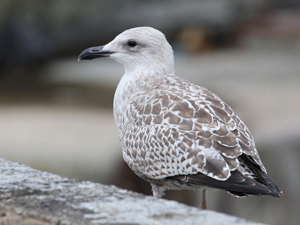 Herring Gull
Herring Gull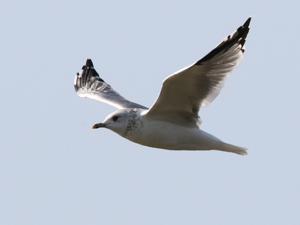 Common Gull
Common Gull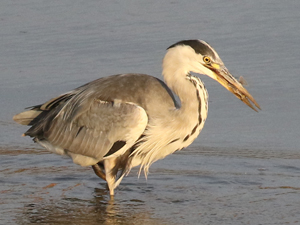 Grey Heron
Grey Heron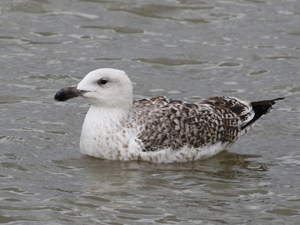 Great Black-backed Gull
Great Black-backed Gull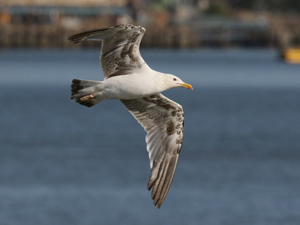 Lesser Black-backed Gull
Lesser Black-backed Gull Black-headed Gull
Black-headed Gull
All photos copyright Nick Upton/Birdnerd.co.uk.
1. Walking towards the pier from Morrison’s car park there are a number of mature trees in the vicinity and this is where Ring-necked Parakeet is most likely to be encountered. Listen out for their unmistakable call. Very little else of note is likely to be seen in what is just an urban car park.
- Black-headed Gull Ring Reading – posted 29/09/21
- Gulls on the Thames – posted by Nick Upton 30/07/21
